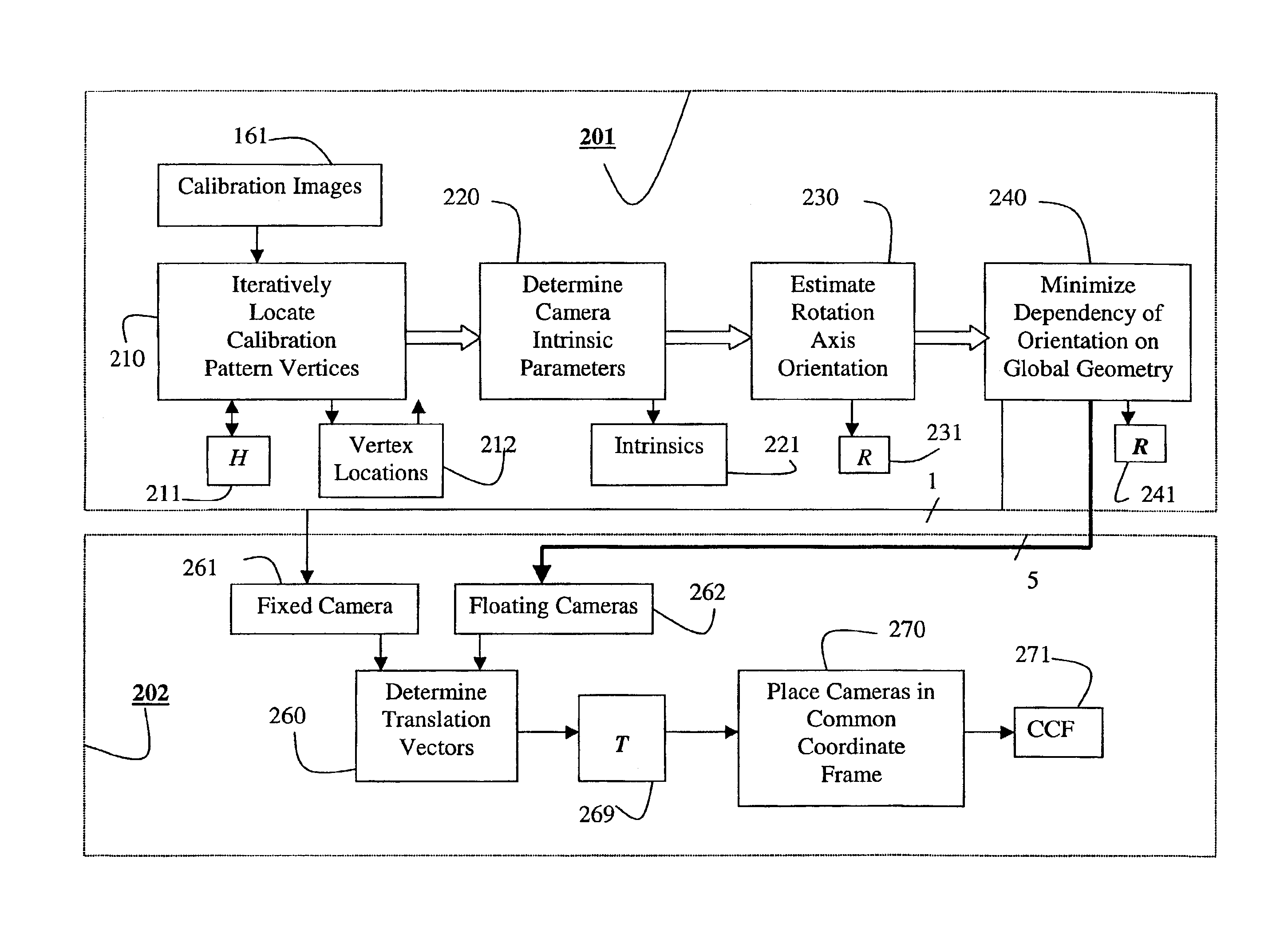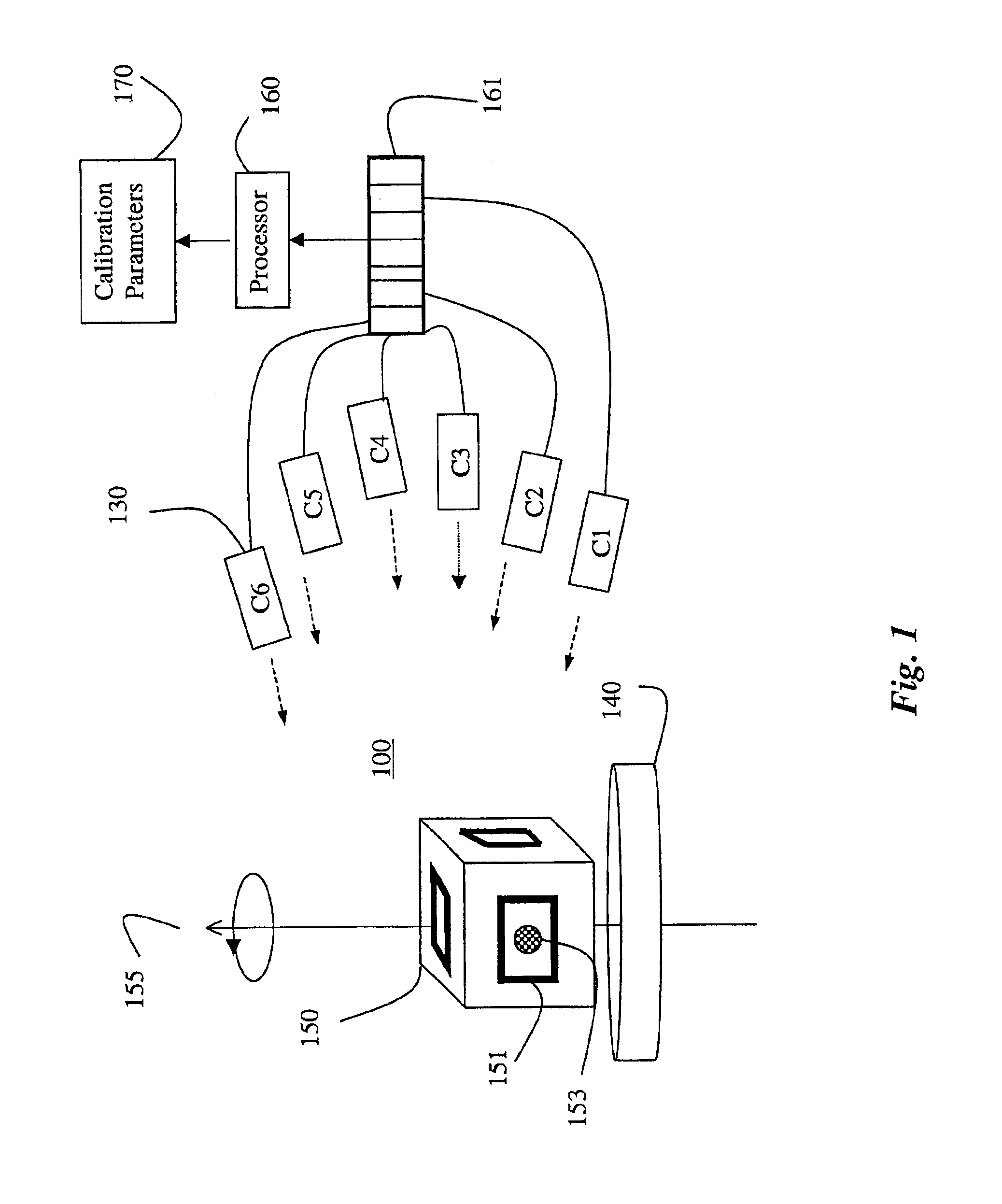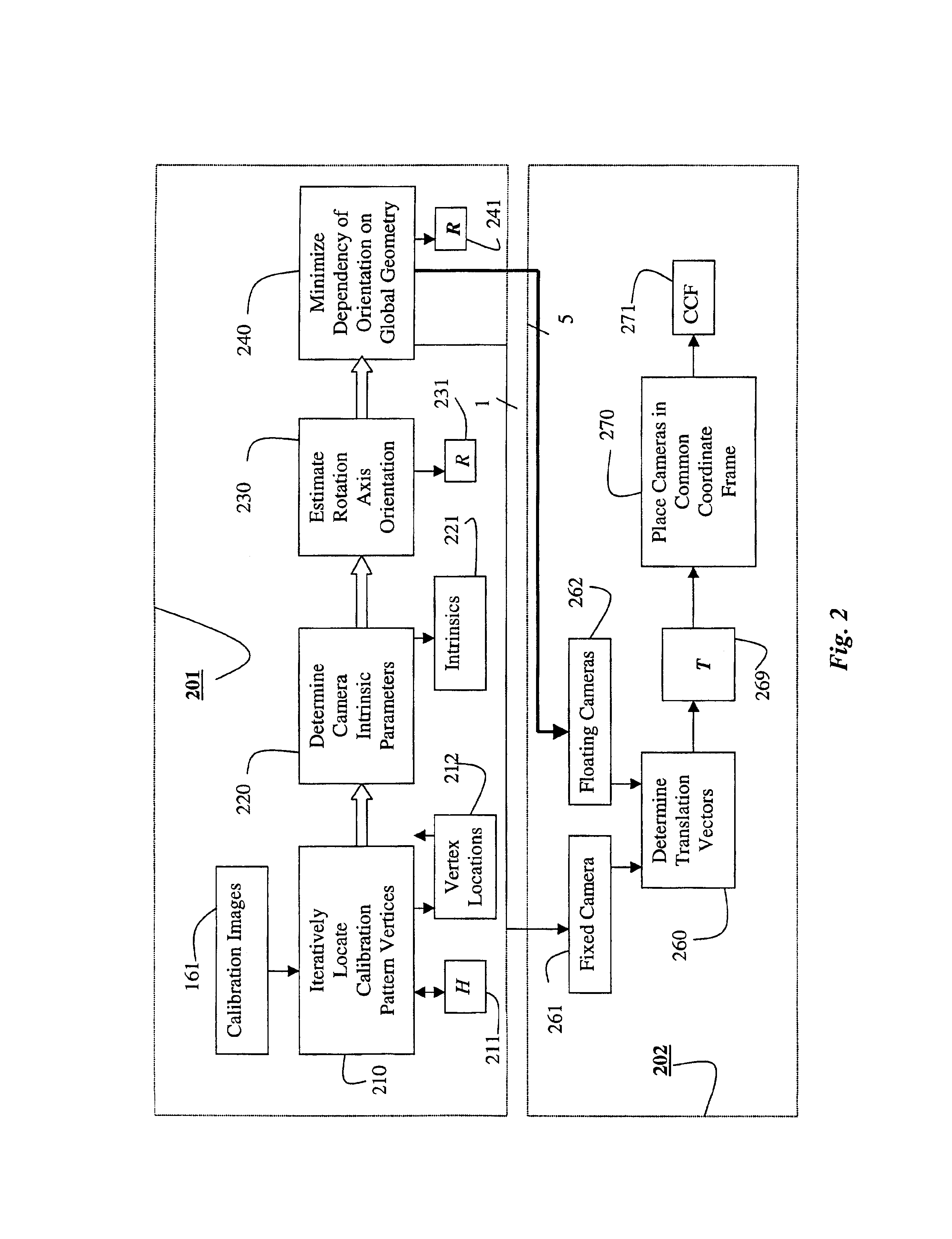Calibration of multiple cameras for a turntable-based 3D scanner
a 3d scanner and turntable technology, applied in the field of scanners, can solve the problems of difficult to supply all necessary camera parameters, difficult to derive complete mathematical models, and difficult to generate high complexity models, etc., and achieve the effects of reducing the number of cameras, and reducing the number of scanners
- Summary
- Abstract
- Description
- Claims
- Application Information
AI Technical Summary
Benefits of technology
Problems solved by technology
Method used
Image
Examples
Embodiment Construction
[0020]The invention provides a system and method for calibrating multiple cameras used with a turntable-based 3D scanner. The invention obtains accurate camera positions relative to a rotation axis of the turntable. Hence, camera positions relative to the turntable can be generated for any specified degree of rotation. Given these camera positions, and corresponding images of a physical object on the turntable, it is possible to acquire a 3D model of that object.
[0021]The present invention deals with the calibration process, i.e., a full metric calibration, obtaining the intrinsic and extrinsic parameters of the multiple cameras, and an axis of rotation of the turntable in an Euclidean coordinate frame. After, the system has been calibrated, models of objects can be constructed by the scanner.
System Structure
[0022]FIG. 1 shows a system 100 for calibration of multiple cameras according to the invention. The system 100 includes multiple cameras (C1-C6) 130, and a turntable 140. A proc...
PUM
 Login to View More
Login to View More Abstract
Description
Claims
Application Information
 Login to View More
Login to View More - R&D
- Intellectual Property
- Life Sciences
- Materials
- Tech Scout
- Unparalleled Data Quality
- Higher Quality Content
- 60% Fewer Hallucinations
Browse by: Latest US Patents, China's latest patents, Technical Efficacy Thesaurus, Application Domain, Technology Topic, Popular Technical Reports.
© 2025 PatSnap. All rights reserved.Legal|Privacy policy|Modern Slavery Act Transparency Statement|Sitemap|About US| Contact US: help@patsnap.com



